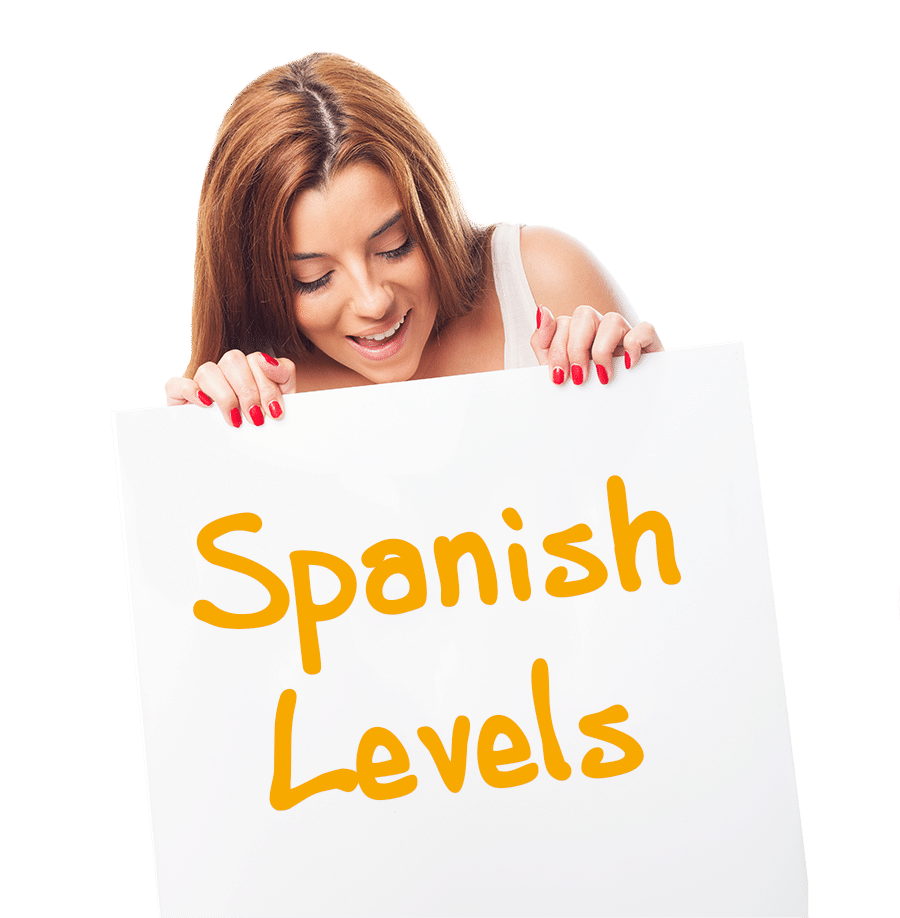In this level the student is able to comprehend common phrases, sentences, and expressions. They can exchange information about common issues and know how to describe occurrences in their past. They can also communicate about their environment and their immediate needs.
Spanish Levels
LAE Madrid uses Common European Framework of Reference for Languages: Learning, teaching, assessment (CEFR), to accurately place Spanish levels for students. In accordance with the levels acknowledged by the Instituto Cervantes, we use this is international framework to measure the level of comprehension, oral expression, and written Spanish. The levels are divided as follows:


Beginner Spanish Levels (A1-A2)
- Presentation: the teacher presents a new concept to the class with lots of examples and constantly checks in with you to make sure you have understood..
- Practice: this is less structured than the presentation stage but is still closely guided by the teacher. In this stage of the Spanish classes you carry out lots of different activities but all focused around the presentation point.
- Production: This is where you get to show off what you have learnt. It is normally the most creative and fun part of the class where you put into action everything you have learnt. This might be through role play, presentation, writing a blog, going out to the local shops to practice ordering, etc.

Intermediate Spanish Levels (B1-B2)
By reaching a B2 level you have pretty much seen and done it all! These are the levels where we refine your grammar, pronunciation and skills. You gain confidence and sophistication in your Spanish. This change of focus needs a completely different methodology that keeps you engaged and motivated whilst still making leaps and bounds with your progress. We used a combination of the Flipped Classroom and the Unplugged Method. There is considerably less reliance on text books and we bring the real world into the classroom. Public speaking, presentations, writing your own essays and blogs become an integral part of the classes as we challenge you to take your Spanish to the next level.
The teachers constantly evaluates how you and your classmates are progressing and adapts the classes to fill in gaps or move you forward when you are ready. This flexibility and adaptation (whilst a lot of work for our teachers!) is fundamental for the higher level Spanish students, if this does not happen your progress can stagnate and you might become frustrated. Despite the eclectic style, the planning behind our methodology for more advanced learners is extensive and you will feel the difference in our methodology from the very first minute.
The student understands phrases about familiar issues such as situations at work, school or leisure. They can deal with situations likely to arise in their daily life in a foreign country, and produce simple phrases/sentences about familiar topics or personal interests. They can also describe experiences, events, dreams, and aspirations, as well as concisely give reasons for their opinions, or explain their goals.
The student understands phrases about topics such as situations at work, school or leisure. They can deal with situations likely to arise in their daily life in a foreign country, and produce simple phrases/sentences about familiar topics or personal interests. They can also describe experiences, events, dreams, and aspirations, as well as concisely give reasons for their opinions, or explain their goals.

Advanced Spanish Level (C1)
For 30 minutes every day, you join with other appropriate level groups to practice interacting in Spanish. It is easy to be become comfortable in your class with your teacher and classmates and then feel uncomfortable and embarrassed once this safety net has been taken away. We want you to feel proud and confident of your abilities, regardless of your level. The activities in our C-2-C classes help you gain fluidity and give you the opportunity to practice your Spanish speaking and listening skills in real life settings.
Our aim is to help you become a confident Spanish speaker, not a lifelong student!
The student is capable of understanding most phrases and sentences, can express thoughts fluidly and spontaneously without effort, and uses correct sentence structure. They use the language correctly in common personal and professional situations. At level C1, they can create clear, well-structured, detailed sentences about complex subjects. They can organize speech and demonstrate coherence in a discussion.
Objectives of our Spanish Courses
Our Spanish courses aim to teach students to express themselves in the Spanish language with ease, effectively, correctly and as fluidly as possible. For this reason, each level has specific functional, grammatical, lexical, cultural and strategical content, as well as the necessary abilities to be able to command the language effectively.



